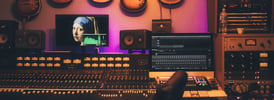How to Build Your record Studio(on a budget)
Find out everything you need to know about the essential elements of a home studio to record and produce your music professionally from home.

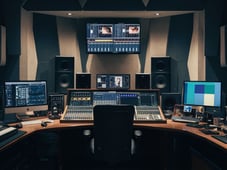
Choosing the Right Computer for Your Home Studio
The computer serves as the central hub of any home studio setup, making it a crucial component to consider when building your setup.
If you're just starting out and already have a computer, it's recommended to utilize what you already own. Whether it's a PC or a Mac, both are suitable for music production, so stick with the operating system you're most comfortable with.
However, if you're in the market for a new computer, there are a few key factors to keep in mind.
When purchasing a new computer for music production, it's essential to invest in a fast and powerful machine. This is because the computer will be tasked with handling multiple large audio files simultaneously, and insufficient power can lead to stuttering and interruptions, disrupting your creative flow.
In terms of specifications, aim for at least 16GB of RAM and the fastest CPU you can afford. While you might be able to get by with less, it's advisable to future-proof your investment, especially considering the ever-expanding file sizes in music production.
Similarly, prioritize a fast internal hard drive, preferably SSD over HDD, with a minimum size of 500GB. Many musicians also opt for an additional external hard drive dedicated solely to storing audio files.
Consider the noise level of the computer's fan as well. Excessive noise can interfere with recording sessions and affect your ability to properly mix and listen to your music.
Laptops have become increasingly powerful in recent years and are now capable of serving as the central hub for most home recording studios. They offer the flexibility to work from various locations, such as cafes or shared workspaces, with the use of headphones. When choosing a laptop for music production, prioritize specifications that meet your needs, such as RAM and storage capacity.
For example, in 2023, I purchased a 14" MacBook Pro M3 for my recording studio, opting for higher specifications to accommodate video editing as well. Alternatively, budget-friendly options like the Mac Mini or Windows laptops such as the Dell XPS or Samsung Notebook 9 are viable alternatives.
Ultimately, whether you choose a laptop or a desktop computer, prioritize specifications that align with your music production needs and budget, ensuring a smooth and efficient workflow in your home studio.


Choosing the Right DAW Software for Your Home Studio
DAW software, short for Digital Audio Workstation, serves as the backbone of your home recording setup, providing access to a virtual recording studio and a plethora of instruments.
With a DAW, you can construct entire songs, track by track, or capture live performances of entire bands in a single take. For solo songwriters, the process might begin with programming a drum rhythm, followed by adding a bass line and experimenting with virtual instruments before recording acoustic guitar. Once the vocals are laid down, you can fine-tune the sound using tools like compression and EQ, and even experiment with different virtual room simulations to find the perfect ambiance.
When it comes to choosing the right DAW for your needs, there are several options available, each with its own unique workflow and suitability for different genres of music.
For loop-based electronic music production, Ableton Live is a popular choice. Initially developed for DJs and live performers, Ableton Live has evolved into a powerful DAW known for its intuitive workflow and extensive array of features. FL Studio is another excellent option for electronic music producers, offering simplicity and affordability without compromising on functionality.
If you're a Mac user, Logic Pro is a highly regarded DAW that comes bundled with a vast collection of instruments and effects. Renowned for its power and versatility, Logic Pro is particularly popular among composers and those working in film, TV, and video game music production.
Ultimately, the best DAW for you will depend on your personal preferences, workflow preferences, and the type of music you're producing. Take the time to explore different options and consider trying out demos or trial versions before making your final decision. With the right DAW at your disposal, you'll have everything you need to bring your musical ideas to life in your home studio.


Audio Interface: Your Gateway to High-Quality Sound
An audio interface may appear as a humble box, but it serves as a crucial link between your instruments and your computer. Connected via USB, Thunderbolt, or even Firewire for older computers, this device plays a pivotal role in converting analog signals into digital ones.
You might wonder, doesn't your computer's sound card already handle this task? While that's true, audio interfaces are renowned for their ability to convert signals at a much higher quality. Engineers often obsess over these devices in pursuit of the purest sound.
But with numerous audio interfaces available, how do you choose the right one for your home recording studio?
For starters, consider the number of channels you need. A simple two-channel interface, like the M-Audio M-Track Solo priced at just $50, may suffice if you're recording solo vocals and guitar. However, if you're capturing a live performance by a four-piece band, you'll likely require at least eight inputs: two for vocals and guitar, one for bass, two for stereo keyboards, and three for the drum kit.
It's essential to note that the number of inputs determines how many sound sources you can record simultaneously. However, you can always use a single input to build up a song, track by track.
Additionally, if you plan to use a condenser microphone, ensure your audio interface provides phantom power. Fortunately, many interfaces, including those from the Audient range, offer this feature.
For those with a more generous budget, the Universal Audio Solo is worth considering. This two-channel Thunderbolt interface delivers incredible sound quality, making it a favorite among discerning musicians and engineers alike.
Ultimately, whether you're a solo artist or recording a full band, investing in a quality audio interface is essential for achieving professional-grade recordings in your home studio. Choose wisely, and let your creativity soar with pristine sound quality.


Microphones: Capturing the Essence of Your Sound
No home recording studio is complete without a microphone—or several.
Studio microphones serve a multitude of purposes, from capturing vocals to recording acoustic instruments and creating unique samples. Different microphones are tailored to specific instruments, and as you delve deeper into your recording journey, you'll likely find yourself amassing a collection. Broadly classified as dynamic mics or condenser mics, each type offers distinct advantages.
Dynamic Microphones
Dynamic microphones, renowned for their durability, are ideal for live performances. Think of iconic models like the Shure SM58 and SM57, beloved by artists worldwide. These mics are more budget-friendly than their condenser counterparts and do not require external power sources. Dynamic mics excel at capturing loud sounds but may lack the sensitivity required for more delicate recordings.
Condenser Microphones
Condenser microphones, on the other hand, offer greater sensitivity and are well-suited for both vocals and instruments. They capture a warm, full sound with exceptional clarity, particularly in the higher frequencies. When shopping for a condenser mic, consider the microphone's polar pattern—opt for a cardioid pattern for front-focused recording or an omnidirectional pattern for capturing sound from all directions.
Choosing the Right Microphone
While I've amassed a diverse collection of microphones over the years, I often find myself gravitating towards the same few for most recordings. For beginners, I recommend starting with two quality microphones: a cardioid dynamic mic and a condenser mic. This allows you to explore different sonic possibilities and become intimately familiar with each mic's characteristics.
A popular choice for a condenser mic is the Rode NT1-A. This versatile, sturdy microphone features a cardioid pattern, making it ideal for front-focused recording. Keep in mind that it may require a sturdy microphone stand due to its weight.
For those willing to invest a bit more, the AKG C214 is worth considering. This large-diaphragm condenser mic, akin to the industry-standard AKG C414, delivers exceptional sound quality and versatility, making it a favorite among professionals.
Ultimately, the right microphone for you will depend on your specific recording needs, budget, and personal preferences. Take the time to research and experiment with different models to find the perfect match for your home studio setup. With the right microphone at your disposal, you'll capture the essence of your sound with precision and clarity.

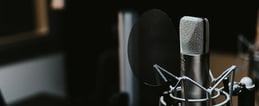
Studio Monitors: Your Window to Accurate Sound Representation
While studio monitors may resemble standard hi-fi speakers, there's a critical distinction between the two. Hi-fi speakers are engineered to enhance the music, often adding coloration and boosting bass frequencies. Conversely, studio monitors are designed to provide a neutral, uncolored representation of your recorded music.
The Importance of Accurate Monitoring
Accurate monitoring is essential for achieving professional-quality mixes. Mixing on hi-fi speakers may result in misleading sound representations, leading to discrepancies when played back on other systems. Think of it as painting a picture in dim lighting—you may not perceive the true colors. Accurate monitoring allows you to hear your mix as it truly is, enabling you to make informed decisions during the mixing process.
However, not all studio monitors offer the same level of accuracy, and achieving a "flat response" often comes with a higher price tag.
Choosing the Right Size Monitor
Selecting the appropriate monitor size for your studio space is equally crucial. Large monitors in a small room can cause bass frequencies to bounce around, leading to acoustic issues. Studio monitors are available in various sizes, typically ranging from around 3" to 10" in woofer size. Consider the dimensions of your studio space when choosing monitor size to ensure optimal sound reproduction.
Additionally, many producers utilize a secondary pair of monitors or low-fi speakers for comparison. If you opt for this setup, ensure your audio interface supports at least four outputs.
Recommended Studio Monitors
Genelec is renowned for its high-quality studio monitors, offering a range of options suitable for various room sizes. The Genelec 8010A, equipped with a clean and detailed sound, is ideal for smaller spaces. For medium-sized rooms, the Genelec 8030C paired with the 7050C subwoofer delivers exceptional performance. Larger rooms may benefit from the Genelec 8040B or 8050B models, offering enhanced bass response and clarity.
Ultimately, the choice of studio monitors depends on your budget, room size, and personal preferences. With the right monitors and proper acoustic treatment, you can achieve accurate sound reproduction in your home studio, facilitating the creation of professional-quality mixes.

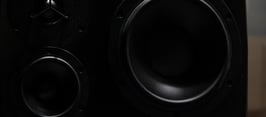
Studio,Headphones: Your Essential Mixing Companion
Studio headphones serve as invaluable tools for checking your mix and working late nights without disturbing your neighbors. Available in two types—open back and closed back—each offers distinct advantages for different studio tasks.
Closed Back Headphones
Closed back headphones feature sealed ear cups, preventing sound leakage and providing isolation ideal for recording. While they excel at containing sound, they may not be the best choice for critical listening and mixing due to potential bass buildup. Popular models like the Sony MDR-7506 are suitable for tracking and recording, offering reliability and durability.
Open Back Headphones
For mixing, mastering, and high-fidelity listening, open back headphones are the preferred choice. These headphones feature perforated ear cups that allow air to pass through, resulting in a more accurate, natural sound reproduction. While they may leak sound into the room, this is inconsequential for critical listening purposes. Look for open back headphones specifically designed for studio use, known for their neutral sound profile and ability to reveal intricate details in your mix.
Limitations and Recommendations
It's essential to recognize the limitations of mixing on headphones—they can fatigue your ears, and it's advisable to cross-check your mix on studio monitors for a more comprehensive assessment, particularly regarding bass frequencies.
Popular options like the Sennheiser HD650 offer comfort and precision, making them ideal for prolonged listening sessions and critical mix evaluation. Investing in both open back and closed back headphones ensures versatility and accuracy in your home studio setup, allowing you to tackle a wide range of tasks with confidence.
In conclusion, studio headphones are indispensable tools for any home recording studio. With the right pair at your disposal, you can achieve precise, professional-grade mixes and enjoy immersive listening experiences without compromise.

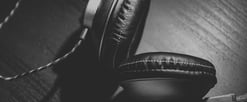
Acoustic,Treatment,Enhancing Sound Quality in Your Home Studio
Acoustic treatment plays a vital role in optimizing the sound quality within your home recording studio. Often confused with soundproofing, which focuses on minimizing external noise, acoustic treatment is dedicated to refining the sound characteristics within a room.
Understanding Acoustic Treatment
In a room filled with hard surfaces like walls, floors, and ceilings, sound waves bounce off these surfaces, resulting in undesirable echoes and frequency irregularities. This can compromise the clarity of recordings and distort the accurate playback of audio.
Contrary to popular misconceptions, makeshift solutions like egg cartons or excessive carpeting do little to address these issues effectively. Acoustic treatment involves strategically placing specialized acoustic panels to control and absorb reflected sound waves, mitigating echo and resonance.
Acoustic Panels
Available in various styles and materials, acoustic panels are designed to absorb specific frequencies based on their shape and composition. Brands like Auralex offer tailored solutions through their room analysis service, ensuring precise placement of panels for optimal results.
While ready-made panels are widely available, many musicians opt to craft their own at a lower cost, utilizing basic carpentry skills and materials like foam or fiberglass.
Planning and Placement
Before installing acoustic treatment, careful planning is essential. Determine the layout of your studio, including the position of your desk and monitors. Your monitors should be equidistant from each other and positioned at ear level when seated.
Strategically place acoustic panels at key reflection points, such as behind speakers, above the listening area, and in corners prone to bass buildup. Additionally, incorporate soft furnishings like curtains, rugs, and duvets to further absorb sound reflections.
For rectangular rooms, a typical setup involves placing panels at mirror points and installing bass traps in corner spaces to address low-frequency issues.
Conclusion
Acoustic treatment is indispensable for achieving optimal sound quality in your home studio. By carefully selecting and placing acoustic panels, you can effectively control room acoustics, ensuring accurate monitoring and pristine recordings. Invest time in planning and experimentation to fine-tune your studio environment, creating an acoustically balanced space conducive to creativity and productivity.


Standsand,Cables,Essential Accessories for Your Home Recording Studio
In your home recording studio setup, having the right selection of cables and stands is crucial for seamless connectivity and optimal performance.
Cables for Connectivity
To interconnect your audio equipment, you'll require a variety of cables. For digital signals, such as those from your audio interface to your computer, USB or thunderbolt cables are essential. For analog audio signals, XLR connectors and ¼” connectors are commonly used.
It's advisable not to compromise on the quality of your audio cables. Opting for midrange cables ensures better sound quality and durability, ultimately enhancing the longevity of your recordings. When purchasing cables, ensure they are of the appropriate length for your setup, and avoid running them alongside electrical cables to prevent interference.
Quality Stands for Stability
Investing in a sturdy microphone stand is essential for ensuring stability during recordings. A midrange microphone stand, such as the K&M 210/2, offers reliability and durability, standing the test of time in various recording scenarios.
Additional Accessories
If you're recording vocals, consider adding a pop filter to your setup. This inexpensive accessory acts as a barrier between the singer and the microphone, mitigating the impact of sudden bursts of air (known as plosives) that can distort recordings. Before purchasing, check if your microphone already includes a pop filter.
Conclusion
Stands and cables are indispensable components of any home recording studio. By selecting quality cables and stands, you ensure reliable connectivity and stability, contributing to the overall efficiency and professionalism of your recording setup. Invest wisely in these accessories to safeguard the integrity of your recordings and streamline your workflow effectively.

